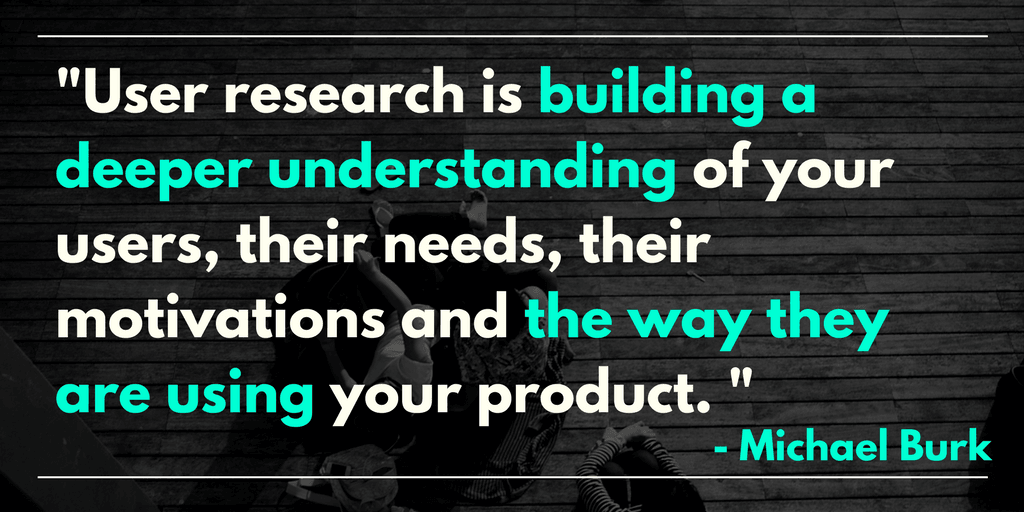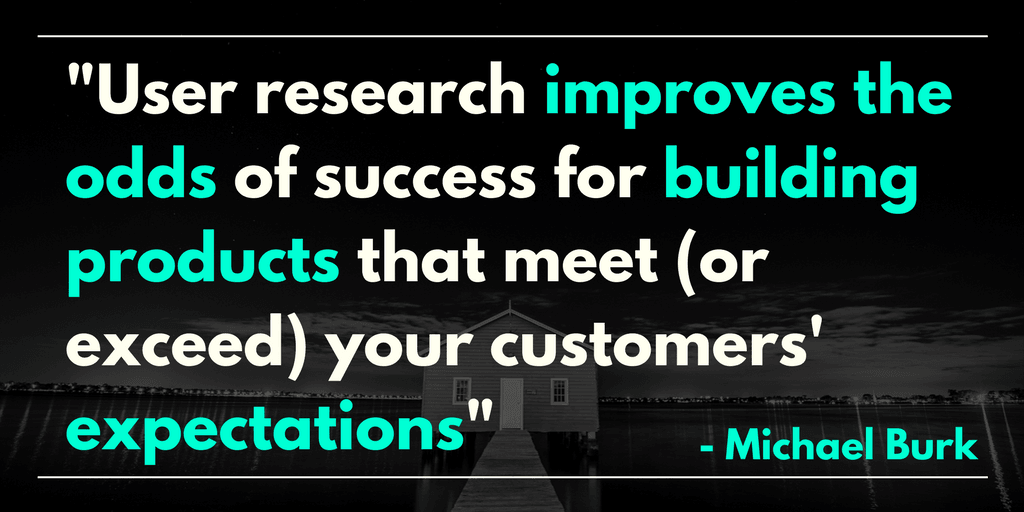Updated: January 24, 2024- 7 min read
What is user research? How to leverage user research techniques to validate customer demand for new products and features? In our recent event, Michael Burk took us through the best UX practices, different user testing experiences (Moderated & Unmoderated) and how to analyze user flows.
Michael Burk is a Product Manager with a lot of experience. Most recently he worked at Scoot as the Vice President. Before that, he’s been at companies of different sizes like BigCommerce, Electronic Arts and Myspace. He holds a bachelor’s degree in Media Arts and enjoys working at start-ups.
Let’s talk about user research
Michael admits that user research is a broad topic that can’t possibly be handled in one presentation as some people devote their whole careers to it. In his presentation, he talked about how user research has been useful to him, what it is and how it’s relevant to Product Managers. He also mentioned different types of user research, went through the research process step by step, and presented a framework for leveraging research in the product.
What is user research?
Michael defined user research as “building a deeper understanding of your users, their needs, their motivations and the way they are using your product. It helps Product Managers understand whom the product is for and why it is valuable.” “The goal of user research is to get actionable or testable data that can be used in the future for another iteration or research process,” he added.

How to do it?
There are different ways to collect the data. Observation techniques, task analysis, and other feedback methodologies are examples of data-collecting tools. They are divided into qualitative and quantitative research.
The purpose of quantitative research is to tell, for example, how people use the product or how they would like to use it. Examples of this type of research are surveys and analytics directly from the products. For quantitative research, you need quite large data sets. This type of research is good for validating or invalidating the hypothesis.
On the other hand, qualitative research is good for getting individual one-on-one insights from customers. Qualitative research can be, for example, interviews and open-ended questionnaires where the respondent has to give an answer instead of just choosing his answer from a scale of 1-10. Qualitative research is more individualized and less structured, and it gives more freedom to the respondent to say what he wants in his own words.
The research process
Michael presented the research process as a five-step loop. The different stages are objectives, hypothesis, methods, conduct, and synthesis.
The first step is setting a goal for the research. Why and what are questions that need an answer and also determining whether a lot of data is needed at the end or just a few most important points. Is there already an existing hypothesis? What data do you have already? If there is some, use that to your benefit.
Secondly, go through what you already know about the users. Think about “what assumptions need to be true for the product to be successful,” Michael said. Next, you have to choose the right research method. It should be effective in achieving the goals set for the research and suit the situation the best. Is it better to choose a qualitative or quantitative research method? “The form and method of the research are determined by the goals,” Michael stated.
The fourth stage is conducting the research. Choose the test subjects and just do it. In the last stage, you synthesize the data. You analyze it and make the gained data actionable. Questions, such as, “did we validate or invalidate the hypothesis,” “did we learn anything unexpected” and “was the research successful” will be answered. The main point in research is gaining data that defines what the next step is.
Five-step product market strategy framework
Identify the target user(s)
Determine differentiating features
Determine table stakes feature (core feature)
Use the research to identify feature gaps and quality deficiencies
Prioritize based on maximum impact
“User research improves the odds of success for building products that meet (or exceed) your customers’ expectations,” Michael said and continued that “user research is mainly about understanding the features the customers value the most.”

Questions from the members of the audience
When conducting especially open-ended research what are the most effective methods of reaching the users?
I think it’s really easy. People make it more complicated than it needs to be. Just pick up the phone and call them. It can be that easy. Especially as a Product Manager, you would be amazed by how willing people are to talk to someone who builds a product that they use. If you’re talking about doing open-ended feedback where you want to get qualitative answers and hear things in their own words, the best way is to pick up the phone and reach out to them.
In some cases that may be viable and in others not. I had the luxury at Scoot to walk to one of the locations where you could park your scooter and talk to people about it. I was able to just walk there and interact with people directly. Depending on the type of product that you’re working with, you might be able to do something like that.
At the very least you can reach out through emails, in-product messaging, or notifications on a website. Hopefully, you can get away with getting feedback from people without incentivizing them to do so because there are all kinds of pitfalls that come if you incentivize people to do the surveys. You might get some false information, and it might not be a good representative sample, so you have to treat the research appropriately.
If you have an existing product with users and data but you are just getting started, so your product doesn’t have metrics or analytics where do you start?
Here you are at the stage where you’re creating a lot of assumptions and hypotheses. In fact, much like in start-ups which I referenced a lot tonight everything that you’re doing is an assumption until you get it in the hands of your users and that’s okay. There’s nothing wrong with that it’s just the stage that you’re at.
You have to continue to make some of those assumptions and then think about how you can figure out whether or not they’re true. In terms of users and people, you want to do user research with you have to have at least a hypothesis about who your target user should be and who are you solving this problem for.
If you don’t have that you have to find it immediately because you need to know who has the problem and if no one has it then go and find another problem to work on. Knowing that people have a problem gives you some assumptions about who they are and then it’s a matter of thinking about who they are and getting into their shoes a little bit. Think about what the day in the life of that user looks like. That process can be very valuable because there can be all sorts of opportunities right there.

Conducting research isn’t really as complicated as it sounds, but it is time-consuming. The whole process as Michael presented has many stages, and from the start to the end it can take a while. However, just like experimenting and testing, in the end, it’s worth it. Without doing it, you wouldn’t get valuable data about the users to help your company grow.
Updated: January 24, 2024




